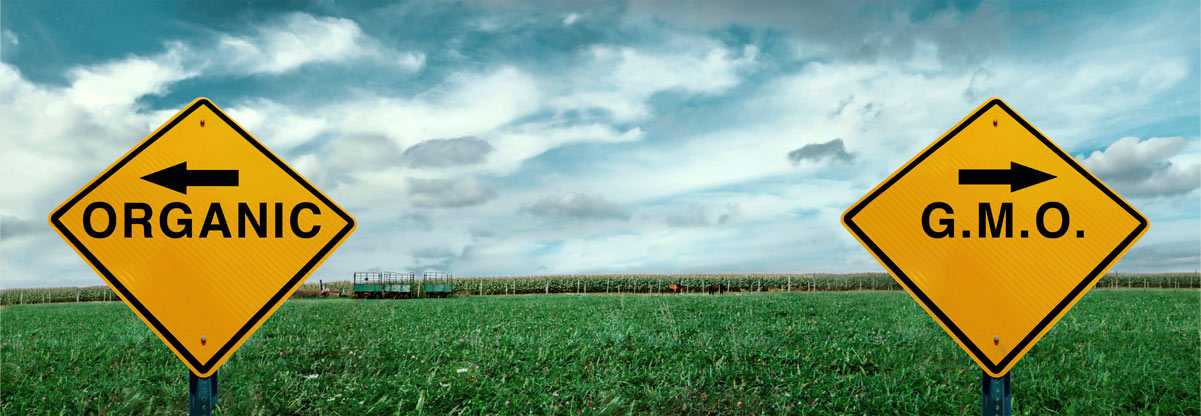Peaceful coexistence of genetically modified and organic crops won’t work until GMO seed companies and farmers accept responsibility and liability for genetic trespass. This was a key message of an educational session, “Looking for the ‘co’ in coexistence,” held at the recent Organic Farming Conference in LaCrosse, Wisconsin.
“There can be no coexistence unless there is a ceasefire first,” said Michael Sligh, organic farmer and program director at the Rural Advancement Foundation International.
Referring to the challenges the organic community faces with GMO contamination of crops and foods, Sligh said: “This is a crisis. We are spending a lot of time dealing with something that wasn’t our making, we didn’t want, and we don’t benefit from.”
Lynn Clarkson, president of Clarkson Grain, an Illinois-based organic grain buyer, said he has been dealing with coexistence issues for 20 years.
“If you want to avoid GMOs, we aren’t doing well with that right now,” he said.
The organic market now accounts for 4.5% percent of the total food market and Clarkson predicts that will increase to 20% by 2040.
“How do we protect this?” he asked. “We want diversity, purity, and significant quality unmolested by GMOs.”
“Identity preservation headache for everyone”
According to Clarkson, organic and non-GMO farmers have suffered an estimated $40 million in losses due to GMO contamination. Sligh cited a Food & Water Watch report that also documents economic losses due to GMOs. These losses result from GMO pollen drift into organic crops, commingling of GMO and organic crops during grain handling, or seed contamination.
As an example of the challenges, Clarkson cited Syngenta’s amylase GMO corn. The corn is genetically engineered to break down starches in corn and convert them to sugar, which aids in the production of ethanol. The problem is that the GM corn could cross-pollinate with food corn and pass on its trait, which would destroy the processing capabilities of food corn.
“Amylase corn ruins food corns at one kernel per 10,000,” Clarkson said.
As a result, Clarkson said the food industry and organic farmers lose.
“It’s an identity preservation headache for everyone—organic, non-GMO, and even other GMO farmers,” he said.
Concerns about amylase corn have caused Clarkson to hesitate buying organic grains from Iowa where production of the GMO corn is most concentrated and contamination risks are high.
“We have to because we may have problems we can’t even measure,” he said. “It’s a loss of choice to buyers and farmers all across the spectrum.”
Recommendations: Pure seed is a must
Despite the challenges, Clarkson and Sligh gave many recommendations for GMO prevention.
Both emphasized the importance of having pure non-GMO seed.
“If we can’t get clean seed, we are in trouble from the get-go,” Sligh said.
If GMO contaminated seed is planted, the level of contamination will only get worse once the plant grows and is exposed to GMO pollen from neighboring fields.
Both Clarkson and Sligh recommended that the U.S. Department of Agriculture require GMO seed companies to label their seed bags with the GMO content of the seed.
“What I really want is for a seed company to tell me what the GMO level is in a bag of seed. I cannot find that,” Clarkson said.
“If we had that it would give us a fighting chance to know if we are in a problematic situation,” said Sligh who encouraged audience members to send comments to the USDA recommending seed bag labels.
Clarkson emphasized the need to preserve the non-GMO purity in U.S. seed banks, which preserve seed varieties.
Sligh discussed the importance of reinvigorating public plant breeding programs to maintain seed diversity and counter corporate monopolization of seed.
“Plant diversity and public plant breeding are keys to addressing the challenges of climate change,” he said.
“Whoever causes the problem is responsible”
Clarkson wants to see a uniform standard or definition for non-GMO. “We need to define purity standards. This is a starting place for other discussions,” he said.
Clarkson also says the USDA should consider market impacts when deciding whether to approve new GMOs
Sligh has recommended a fund, paid by GMO seed companies and farmers, that would compensate farmers who suffered losses due to GMO contamination but the USDA has rejected that idea.
Both Clarkson and Sligh say coexistence comes down to accepting responsibility.
“It goes back to old fence laws,” Clarkson said. “Each neighbor paid one-half. With GMOs we need a different fence with a shared cost by each neighbor.”
Sligh goes further. “The ‘polluter pays’ principle is the holy grail,” he says. “Whoever causes the problem is responsible, and the one we need to hold accountable.”









